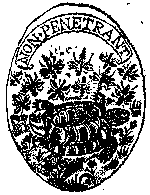Pillory TheaterSource Material
|
 |
| Revert and Enjoy Back to never never land... by Linda Truzzolino December 11, 1968 Editor(Owen Daly)> In addition to Runesglee and The Elephant, Pillory Theater created a children's theater piece, Bags, Boats, Tubs, and Kids performed in several locations in 1968, 1969. It is the only known occurrence of Grotowski's techniques employed in children's theater. When is the last time you went to a theater where the seats are on the stage and the children are seated together in the front rows without their doting mothers and fathers telling them, shh? On Sunday afternoon the Pillory Theater presented Bags, Boats, Tubs and Kids, billed as a "miracle play for children" (and for adults who enjoy entering a child's world). Actually it is for all adults, because from the first time the players dance onto the stage there is no choice about entering the world of children. You are in it. The theater is pattered after the Jerzy Grotowski method: destroy the barrier between actor and audience and evoke natural responses form the audience. That is the reason for separating the children form their parents: the children can react freely without mother telling them to lower their voices, keep their feet on the floor or to blow their noses. Bags, Boats, Tubs and Kids is simply three playlets telling how St. Nicholas became the giver of gifts, protector of boats, and benefactor of children. As the players enter dancing and vocalizing various sounds, they establish a visual contact with the audience. Facial expressions and body motions are explicitly exaggerated - except the actors do not give the impression of adults exaggerating their motions. Rather, it appears they are letting their faces show the emotions that children show before they are taught to disguise them and be polite; the kind of achievement that takes hours of discipline that cannot show. Child, or rather, audience involvement (yes, it took them a while longer, but the adults joined in too) is essential. The barrier is quickly destroyed when the first narrator sits among the audience and asks for their help in creating wind to move the cardboard ship (one of the few props utilized). And, of course, when the blow it too far, the other side of the audience must blow it back again. The audience helps remind St., Nicholas to wear his thinking cap, and carry his wonderful stick and "wonderful, wonderful bag." Everyone boos at the girl who plays the moneylender in one playlet and the wicked old widow in another, and cheers when St. Nicholas fixes her with his fixing stick. I am not sure if that sounds ridiculous in print, but it is delightful to watch and be a part of. There was no program, so credit cannot be given to each actor by name. As a group they worked beautifully. The narrator of the first scene was especially good at involving the audience. St. Nicholas was worthy of all the cheers and the moneylender-wicked widow was disarmingly evil. And I almost forgot - the candy canes thrown to the audience at the end were delicious.
| |